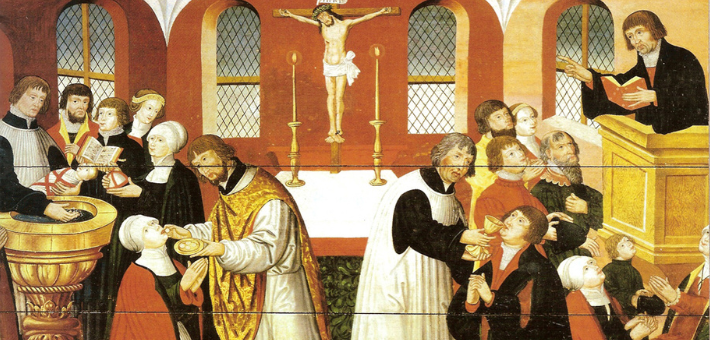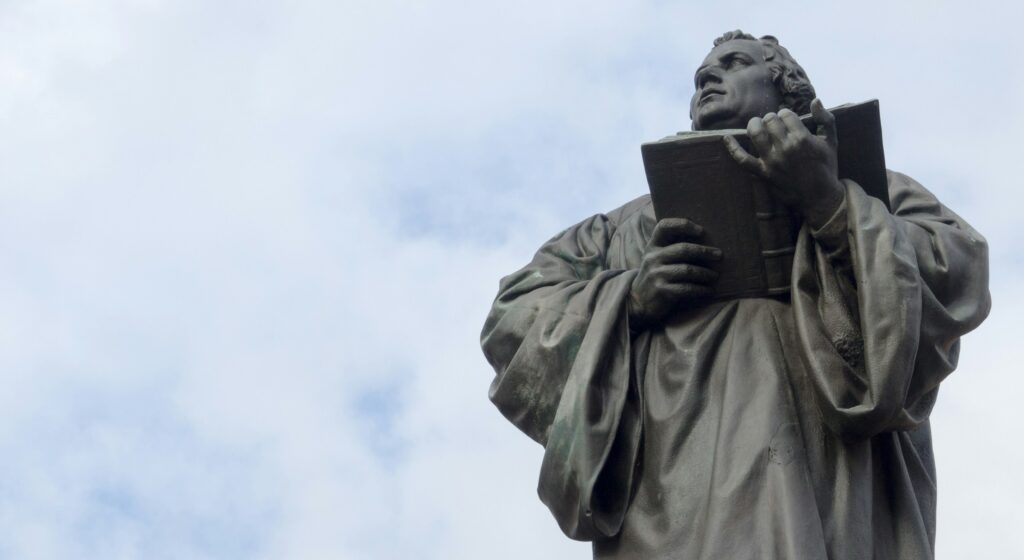Commentary on Psalm 46
Luther was right!1
Psalm 46 is usually classified as a Song of Zion that, along with Psalms 48, 76, 84, 87, and 122, delights in the special place reserved for Jerusalem as the center of the world, chosen by God as the earthly center of the divine presence. That this is so may be seen from the phrases “the city of God, the holy habitation of the Most High. God is in the midst of the city” (verses 4–5). But the psalm seems to be concerned with more than this.
Others, of a more literalistic bent, unconvinced of the classification Song of Zion since neither Jerusalem nor Zion is explicitly mentioned, regard Psalm 46 as a Hymn of Confidence, in which the psalmist expresses trust in God in the midst of adversity. This can be seen in the phrase “we will not fear” (verse 2). But, again, the psalm, which does not follow the usual outline of the hymn, seems to be concerned with more than this.
Martin Luther, in “A Mighty Fortress Is Our God,” his momentous paraphrase of the initial verses of Psalm 46, draws our attention away from both the city of Jerusalem and the trusting response of the people and focuses upon the activity of the “Mighty Fortress” that is our God.
We sing this psalm to the praise of God, because He is with us and powerfully and miraculously preserves and defends His church and His word against all fanatical spirits, against the gates of hell, against the implacable hatred of the devil, and against all the assaults of the world, the flesh, and sin.2
Even a cursory reading of the psalm, paying attention to its own structural markers, suggests that Luther has correctly discerned the essence of this powerful hymn. First, we must account for the repetitions that so often provide the structural matrix of the text:
“Change” [verse 2, New Revised Standard Version], “move” (verse 5), and “totter” (verse 6) are all mot, “totter”
“Earth” (verses 2, 6, 9) is erets
“In/on the earth” (verses 8, 10) is baarets
“Roar” (verse 2) and “in an uproar” (verse 6) are from hamah, “roar”
“Our” (verses 1, 7, 11) is lanu
When it is recognized that “refuge,” machaseh (verse 1), and “refuge,” misgav (verses 7, 11), are a common word pair in poetic texts, we can dispense with Gunkel’s earlier proposal, followed by the Lutheran Book of Worship, the New American Bible, and the New Jerusalem Bible, that we insert the “refrain” of verses 7 and 11 after verse 3; then the following structure presents itself:
God is our refuge (machaseh, “refuge”; lanu, “our”) – verse 1
We will not fear natural calamities (mot, “totter”; hamah, “roar”; erets, “earth”) – verses 2–3
The city will not totter because God is there (mot, “totter”) – verses 4–5
We will not fear political calamities (mot, “totter”; hamah, “roar”; erets, “earth”) – verse 6
God is our refuge (misgav, “refuge”; lanu, “our”) – verse 7
See what God has done on the earth (Imperative; “on the earth”) – verse 8
War and weapons destroyed my God (erets, “earth”) – verse 9
Know that God is exalted in the earth (Imperative; “in the earth”) – verse 10
God is our refuge (misgav, “refuge”; lanu,“our”) – verse 11
The first section, verses 1–7, framed by “our refuge,” depicts a secure city that will not “totter” (verses 4–5), further framed by the “tottering” terrors of nature (verses 2–3) and the “tottering” kingdoms that surround it (verse 6). The steadfast declaration of the opening verse coupled with the presence of God in verse 7 explains the serene nature of the city unthreatened by the (insert your choice of natural disaster here—whether tsunami, volcano, or earthquake) below or the political plots and conspiracies that dissolve even as God speaks. These terrors of nature reflect current or future threats to the city, not the biblical creation traditions or the primordial chaos battles of the ancient Near East that are frequently seen in these verses. There is no battle here, no mention of creation, and the people declare, “We will not fear” (verse 2a), supposedly when and if these events occur. The machinations of history depicted in verse 6a are similarly concerned to portray God as the God of history.
If water, both as a destructive and a positive force, was the dominant metaphor of the first section, the second section, verses 7–11, again framed by “our refuge,” centers on the fiery destruction of earth’s weaponry as a means of abolishing “earth’s” warfare (verse 9), further framed by the imperative to “come, see … God’s desolations ‘in the earth’” (verse 8) and the imperative to “desist and know that [God] is God … ‘in the earth’” (verse 10).
But to whom are these commands addressed? Israel, or the nations? The negative character of the horrors they are commanded to see, as well as the tenor of the Hiphil of raphah—“desist, abandon, leave off” (not the pious “be still” of the translations)—suggests that the nations are being called to task before God is exalted by them (verse 10b; see 66:5). The staggering portrayal of smoking destruction is apocalyptic, or at least eschatological, suggesting that the psalm speaks of God’s final victory over nature and the nations.
Yes, Luther was right. The psalm is best seen as a psalm about God and the divine presence, not Jerusalem. It functions as a declaration to God’s people concerning the unimaginable source of strength that is theirs, and ours, in God—or, as Luther’s hymn makes clear, in Christ.
Notes
- Commentary previously published on this website for October 25, 2015.
- Martin Luther, A Manual of the Book of Psalms, or, The Subject-Contents of All the Psalms; now first translated into English by Henry Cole (London: R.B. Seeley & W. Burnside, 1837), 132.



October 26, 2025